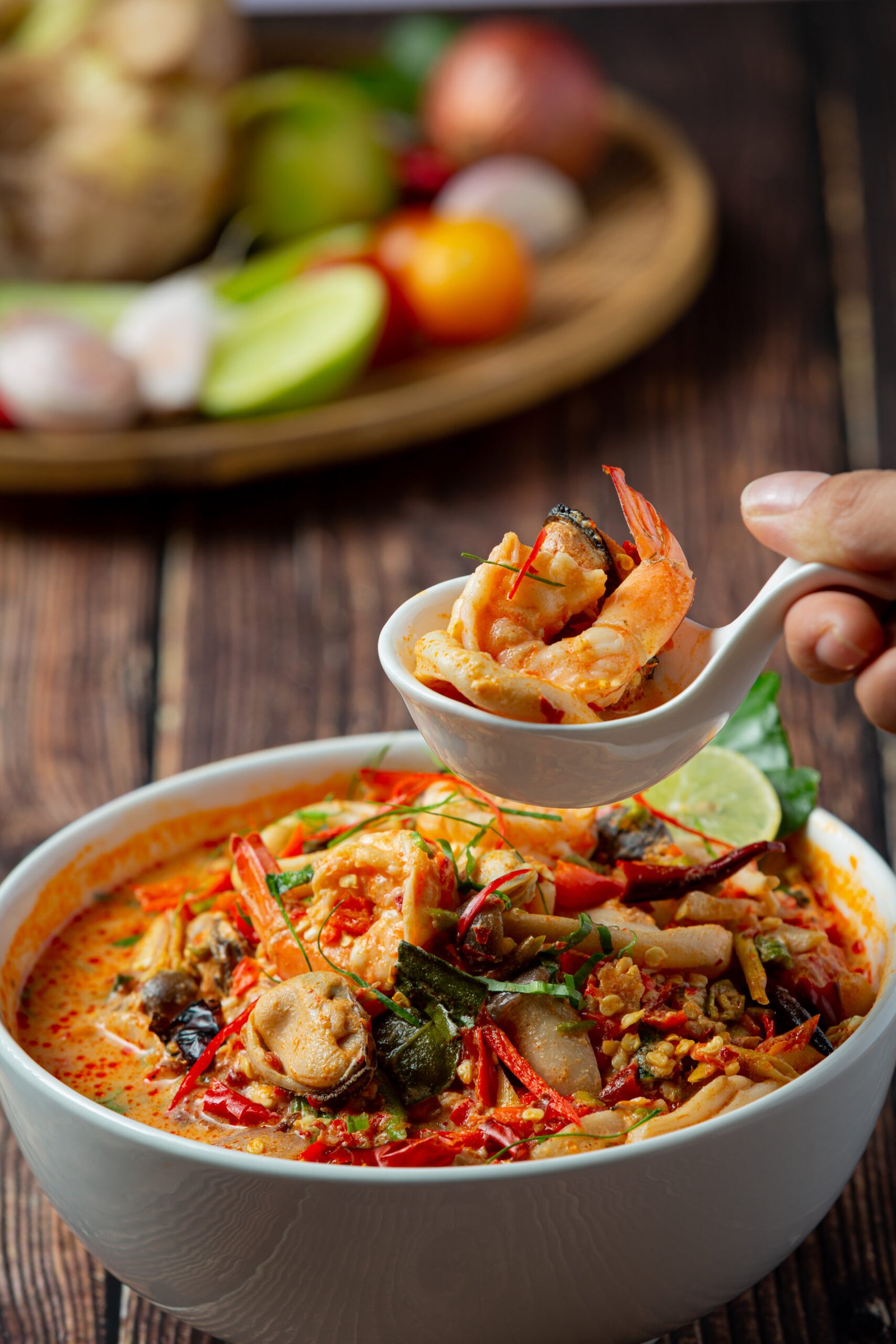Introduction to Thai Cuisine
Here we will get to know about Thai cuisine, a rollercoaster experience from sour to salty, spicy to sweet. Thai food is renowned for its flavorful combinations, fragrant herbs, and harmony of salty, sweet, sour and spicy flavors. Some iconic dishes include Pad Thai, Tom Yum soup, Green curry and Som Tum [papaya salad]. You can explore the diverse street food scene, the use of aromatic herbs like lemongrass and basil. Rice is also an important part of Thai meal.
The Pillars of Thai Flavors
1. Sweet Harmony
One cannot dive into Thai cuisine without encountering the enchanting dance of sweetness. From the iconic Pad Thai, a stir-fried noodle masterpiece, to the luscious Mango Sticky Rice, sweetness is a cornerstone. Thai chefs skillfully incorporate palm sugar, tamarind and tropical fruits, crafting dishes that leave a lingering, delightful sweetness on the palate.
2. Spicy Euphoria
Thai cuisine boldly embraces spice, inviting diners to experience a spectrum of heat. Green, Red, and Yellow curries showcase the aromatic blend of herbs and spices, while Tom Yum soup tantalizes taste buds with its fiery broth. Chilies, ginger and garlic are the maestros conducting this spicy symphony.
3. A Symphony of Sourness
The sour notes in Thai cuisine are often orchestrated by the tangy brilliance of lime and tamarind. Tom Kha Gai, a coconut milk soup, and Som Tum, a zesty papaya salad, showcase the artistry of combining sour elements to create a refreshing and invigorating dining experience.
4. Salty Serenity
Balancing the melody, saltiness is carefully woven into Thai dishes through fish sauce, soy sauce, and salted preserved items. From the umami-rich Pad See Ew to the savory goodness of Khao Pad [fried rice], salt plays a crucial role in elevating the overall flavor profile.

Aromatic Elegance: The Role of Herbs and Spices
Thai cuisine owes much of its aromatic charm to the abundance of fresh herbs and spices. Lemongrass, basil, cilantro and kaffir lime leaves infuse dishes with a fragrant bouquet. The result is not just a meal but a sensory experience, where each bite carries the essence of Thailand’s divers landscapes.
Regional Diversity in Thai Culinary Artistry
Beyond the familiar favorites found in Thai restaurants worldwide, the country’s regional cuisines offer a kaleidoscope of flavors. A deeper understanding of Thai gastronomy can be gained by investigating regional variances, from the fiery foods of North-eastern Isaan to the delicacies of Southern Thailand laced with coconut.
Communal Dining: A Cultural Feast
Thai dining is a communal affair, reflecting the country’s strong emphasis on family and community. Shared dishes, such as the classic Tom Yum Goong or a platter of Pad Kra Pao, foster a sense of togetherness. This shared approach represents the warmth and generosity that are deeply rooted in Thai culture, while also improving the dining experience.

Conclusion: Thai Cuisine Beyond Borders
Thai food has won the hearts and palates of foodies all around the world with its wonderful Symphony of flavors. The culinary journey takes us through a diverse landscape of taste, where sweet meets spicy, and sour dances with salty, creating a harmonious balance that defines Thai dishes. Thai cuisine transcends geographical boundaries, inviting us to savor the essence of Thailand on our plates. Whether indulging in the street food delicacies of Bangkok or savoring the traditional flavors of a family-owned restaurant in Chiang Mai, Thai cuisine is a journey of culinary discovery. As we delve into its rich tapestry, we find not just a collection of dishes but a cultural heritage served with each delectable bite.
I hope you find my blog helpful.




Pingback: Unveiling the Irresistible Flavors: A Deep Dive into Dave's Hot Chicken Menu - humanopedia
Pingback: Sandwiches 101: Explore the New Global Delights - octomys